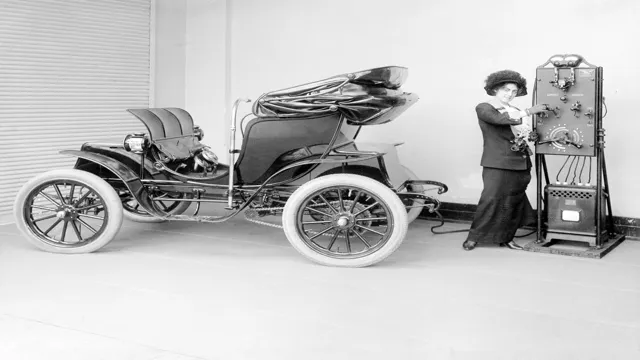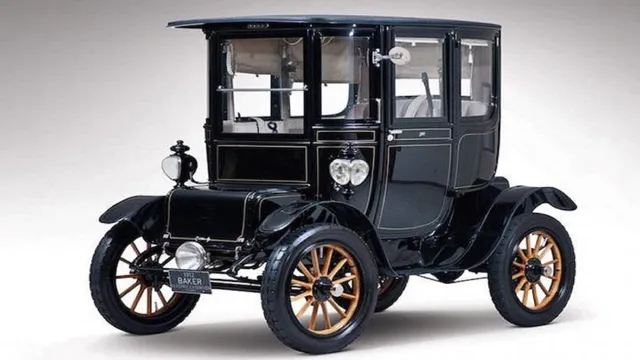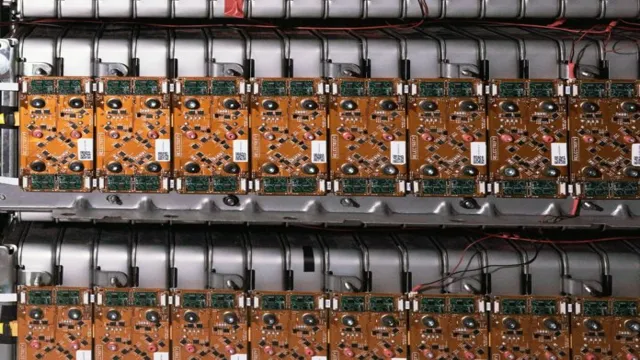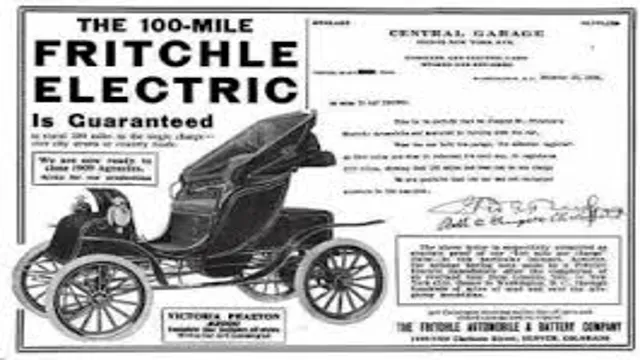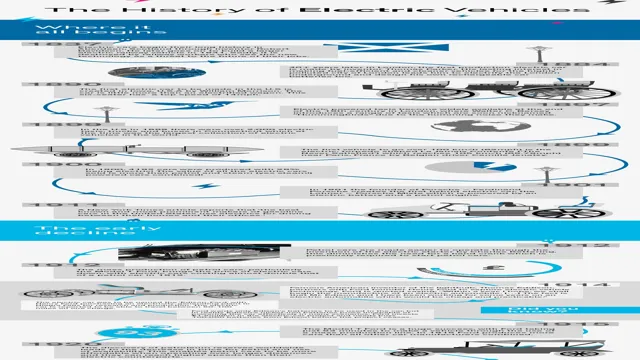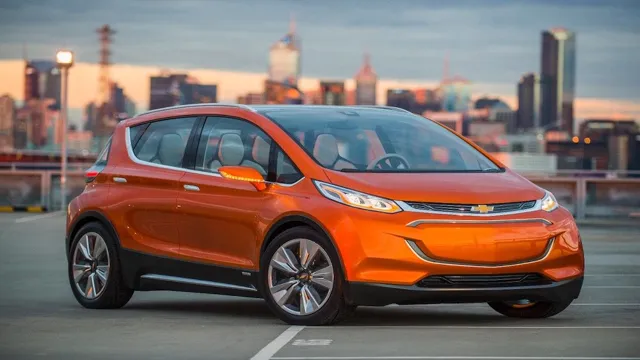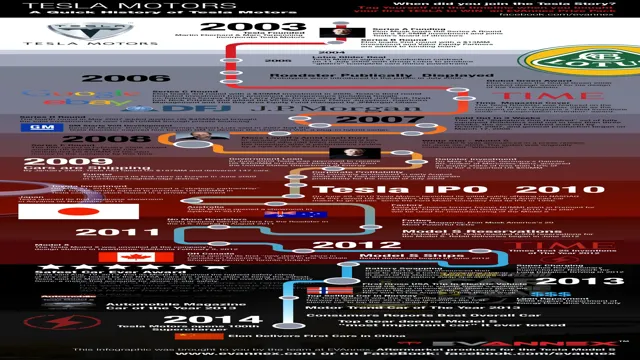The Revolutionary Rise of Electric Cars: Tracing Their History from the Year 2000
Electric cars have become increasingly popular in recent years as concerns regarding the environment and the negative effects of fossil fuels have grown. However, the history of electric cars dates back much further than many may realize. In fact, the electric car has been around since the early days of the automobile, with the first electric vehicle being built in Scotland in the late 1830s.
But despite being one of the earliest forms of transportation, electric cars only gained widespread popularity in the 2000s. This was due to several factors, including advances in technology that made them more practical and affordable, as well as growing concerns over climate change and air pollution. Since then, electric cars have gone from being a niche market to a mainstream option for drivers all over the world.
They continue to evolve and improve, with new models boasting longer ranges and faster charging times. In this blog post, we will dive into the history of electric cars, focusing specifically on the 2000s and the pivotal role they played in the development and adoption of electric vehicles. From the early pioneers of the electric car industry to the present day, we will explore how electric cars have transformed the automotive industry and what the future may hold for this exciting and ever-evolving technology.
Early Models of Electric Cars
Electric cars have a long and fascinating history dating back well over a century. While many new models and advancements in technology have been made in the 21st century, electric cars have actually been around for quite some time. Early models of electric vehicles first came onto the scene in the late 1800s and were quite popular with the wealthy elite.
In those days, electric cars had limited range and speed, but they were still seen as a luxurious and innovative mode of transportation. It wasn’t until the early 2000s that electric cars saw a resurgence in popularity. With advancements in battery technology and increased concerns about the environment, more and more automakers began producing electric cars.
By the end of the decade, the market for electric vehicles had grown by leaps and bounds, and it shows no signs of slowing down anytime soon.
Toyota Prius and Honda Insight
Early models of electric cars, such as the Toyota Prius and Honda Insight, were groundbreaking vehicles that left a significant impact on the automotive industry. These cars were some of the first hybrid models that combined both gasoline and electric power sources to improve fuel economy and reduce emissions. The Toyota Prius, launched in 1997, quickly became the best-selling hybrid vehicle in the world due to its impressive technology and user-friendly design.
Meanwhile, the Honda Insight, which debuted in 1999, featured an aerodynamic body that improved its efficiency and generated less wind resistance. Both models paved the way for modern electric cars that are now seen on the road today. Although new technology has replaced some features of these early models, they still deserve recognition for their significant contribution to the development of electric cars.
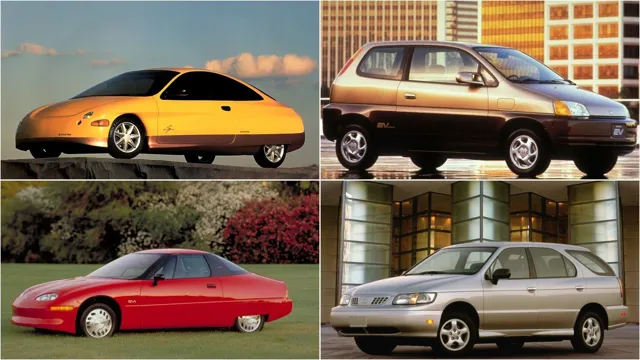
GM EV1 and Nissan Altra EV
The GM EV1 and Nissan Altra EV were early models of electric cars that paved the way for the modern electric vehicles we have today. These models were designed to be environmentally friendly options for drivers and were equipped with rechargeable battery systems that eliminated the need for gasoline. The GM EV1 was sleek and aerodynamic, making it stand out among conventional vehicles, while the Nissan Altra EV was more practical, with a spacious interior and large cargo area.
Despite their innovative designs, these early electric cars faced numerous challenges, including limited range, lengthy recharge times, and high costs, which prevented them from gaining widespread popularity. However, their success in laying the foundation for future electric car models cannot be underestimated.
Rise of the Hybrids
In the early 2000s, the automotive industry saw a rise in the popularity of hybrid electric cars. These vehicles utilize both electric and gasoline power to achieve better fuel efficiency and lower emissions. The Toyota Prius, first introduced in 2000, quickly became the poster child for hybrid cars and paved the way for other manufacturers to follow suit.
Hybrids proved to be a game-changer, offering drivers a more environmentally friendly option without sacrificing the convenience and range of a traditional gasoline-powered car. The popularity of hybrids paved the way for even more environmentally conscious vehicles, such as fully electric cars and plug-in hybrids. The evolution of electric cars since the turn of the century has led to a significant increase in options for drivers who prioritize sustainability.
The 2000s were the starting point of an exciting transition in the automotive industry that continues to shape the future of transportation today.
Introduction of the Tesla Roadster
The introduction of the Tesla Roadster marked the rise of hybrids in the automotive industry. With the aim to revolutionize the way people view electric cars, Tesla equipped the Roadster with a powerful electric motor that could go from 0 to 60 mph in just 9 seconds.
This was unheard of in the world of electric vehicles, and Tesla’s innovation caught the attention of car enthusiasts and environmental advocates alike. The Roadster was a game-changer, bringing electric cars into the mainstream and paving the way for future electric car models. Its success proved that electric cars were not just an eco-friendly alternative, but also a viable option for performance-focused individuals.
As the popularity of the Tesla Roadster grew, more and more car manufacturers followed suit and began developing hybrids and all-electric models of their own. The demand for environmentally friendly cars continues to rise today, and it’s all thanks to the introduction of the Tesla Roadster – the catalyst of the hybrid revolution.
Hybrid Models from Toyota and Honda
The popularity of hybrid cars has been on the rise for a few years now, and two of the most notable models in the market are the Toyota Prius and the Honda Insight. These vehicles offer the best of both worlds: a gasoline-powered engine as well as an electric motor, ensuring better fuel efficiency and lower emissions. Toyota was the first company to bring a hybrid car to the masses, and their Prius has been a market leader ever since.
Honda’s Insight offers a sleek design and a comfortable ride, with excellent fuel economy and low emissions. As more and more people become aware of the impact of their choices on the environment, it’s no surprise that these hybrid models are becoming increasingly popular. The future looks bright for the hybrid car market, and it’s exciting to see what advancements and innovations will emerge in this space in the years to come.
Ford Escape Hybrid and Chevy Volt
The rise of hybrid vehicles has brought us some amazing technologies, including the Ford Escape Hybrid and Chevy Volt. These vehicles are fuel-efficient and provide an eco-friendly way to travel around town. With the growing concern over the environment, many people are looking for alternative fuel sources to power their cars.
The Ford Escape Hybrid is a great option for those looking for a more traditional SUV. It provides plenty of space for passengers and cargo while still being able to offer excellent gas mileage. On the other hand, the Chevy Volt is a hybrid that runs solely on electricity until its battery runs out, after which it switches to gas.
This vehicle is perfect for those who want to reduce their carbon footprint. Whether you choose the Escape Hybrid or the Volt, you can be comfortable in the knowledge that you are doing your part to help the environment.
Government Incentives
In the early 2000s, the viability of electric cars as a sustainable transportation option began to gain traction. With growing concerns over climate change and rising fuel costs, governments around the world began to offer incentives to encourage the adoption of green vehicles. In 2006, the U.
S. federal government launched the Advanced Technology Vehicles Manufacturing program, providing loans to automakers for research and development of fuel-efficient vehicles. This program kick-started the production of electric cars like the Nissan Leaf and Chevrolet Volt.
Other incentives, such as tax credits and rebates, were also offered to consumers to make electric cars more affordable. These incentives played a crucial role in popularizing electric cars and reducing their costs. In recent years, many governments have extended their incentives to further accelerate the adoption of electric vehicles as part of their efforts to combat climate change.
As we look back at the history of electric cars in the 2000s, it is clear that government incentives played a key role in their rise to popularity.
California’s Zero Emission Vehicle Program
The California Zero Emission Vehicle (ZEV) Program, established in 2012, encourages automakers to produce more electric vehicles (EVs) and hydrogen fuel cell vehicles (FCVs). The state government offers incentives to both consumers and manufacturers to achieve the goal of having 5 million ZEVs on California roads by 202
These incentives include rebates for consumers who purchase or lease a ZEV and credits for manufacturers who produce them. The ZEV regulation applies to all new passenger cars and light-duty trucks, and manufacturers must earn ZEV credits equal to a percentage of their sales in California. This program aims to reduce greenhouse gas emissions, improve air quality, and decrease dependence on fossil fuels.
With more than 50,000 ZEVs sold in California in 2020 alone, the program is proving to be successful in achieving its objectives.
The Energy Policy Act of 2005
The Energy Policy Act of 2005 was a significant step taken by the US government to promote clean energy and reduce dependency on fossil fuels. The act included a number of incentives aimed at encouraging the development of alternative energy sources and improving energy efficiency. Some of the key incentives provided were tax credits for the production of renewable energy, grants for the deployment of clean energy technologies, and loan guarantees to support renewable energy projects.
In addition, the act also established a number of research and development programs aimed at advancing clean energy technologies. These initiatives have helped to foster innovation in the clean energy sector and have contributed to the growth of renewable energy across the United States. As a result, the use of solar, wind, and other forms of renewable energy has increased dramatically in recent years, providing benefits for both the environment and the economy.
The Energy Policy Act of 2005 has been a crucial step in promoting sustainable energy and reducing the country’s reliance on fossil fuels.
Challenges and Innovations
The early 2000s were both a challenging and innovative time for electric cars. With concerns about climate change and sustainability growing, car manufacturers began to invest in electric vehicles. However, the technology was far from perfect, and early models had limited range and high costs.
This made the adoption of electric cars slow and difficult. Despite this, there were also several breakthroughs in electric car technology during this time. For example, the Toyota Prius became the first mass-produced hybrid electric car in 2000.
This paved the way for more advanced electric cars in the years to come. Furthermore, the development of lithium-ion batteries in the early 2000s allowed for more efficient and longer-lasting batteries for electric cars. Despite the challenges, these innovations laid the groundwork for the new wave of electric cars that we see on the market today.
Range Anxiety and Battery Technology
Range anxiety is a major challenge for electric vehicle owners, caused by the fear of running out of power before reaching their destination. Battery technology plays a critical role in addressing this challenge, and innovations in this field are crucial for improving the driving range of EVs. Various companies are investing in research and development to reduce the cost and improve the performance of batteries for EVs.
These innovations include advancements in materials, battery management systems, and fast charging technology. For instance, the development of solid-state batteries is seen as a significant future breakthrough, as they offer higher energy density, longer driving range, and faster charging times. With these advancements in battery technology, electric vehicles’ range will extend, reducing range anxiety for drivers, and making electric vehicles a more practical and convenient alternative to traditional gasoline-powered vehicles.
Introduction of the Nissan Leaf and Tesla Model S
The introduction of the Nissan Leaf and Tesla Model S presented significant challenges and innovations to the automotive industry. Both cars were the first mass-produced electric vehicles that appealed to consumers as practical and stylish. However, the challenges of range anxiety and lack of charging infrastructure needed to be addressed.
Nissan took a unique approach by limiting the range and positioning the Leaf as a city car, which helped to manage consumer expectations. Tesla, on the other hand, incorporated a sophisticated charging network and marketed the Model S as a luxurious and high-performance vehicle. Both companies have continued to innovate and refine their electric vehicle offerings, pushing the boundaries of what is possible in the automotive industry.
As more consumers become interested in sustainable lifestyles, these two electric vehicles have emerged as leading products in a rapidly growing market.
Conclusion: A Bright Future for Electric Cars
In the year 2000, electric cars were still struggling to break through as a viable alternative to gas-powered vehicles. But as the years progressed, so did the technology and public sentiment towards sustainability. Now, in the present day, electric cars are at the forefront of innovation and consciousness for a cleaner planet.
We may have started slow, but the history of electric cars proves that slow and steady wins the race to a greener future.”
FAQs
When did electric cars become popular?
Electric cars started gaining popularity in the early 2000s, when several automakers began producing hybrid and electric cars.
What was the first electric car to hit the market in 2000?
The first electric car to go on sale in the year 2000 was the Toyota Prius, a hybrid vehicle that combined gasoline and electric power.
What advancements were made in electric car technology during the early 2000s?
During the early 2000s, advancements in electric car technology allowed for longer driving ranges and faster charging times, making them more practical for everyday use.
Why did electric cars face challenges during the 2000s?
Despite advancements in technology, electric cars faced several challenges during the 2000s, including high purchase prices, limited availability of charging stations, and concerns about battery durability and safety.
